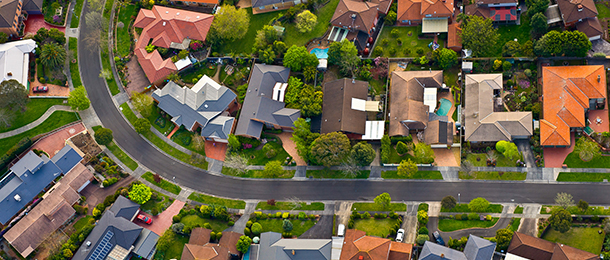Australian residential property prices have declined in value for the first time in 20 months and is predicted to fall by an average of 10 per cent to 15 per cent due to increases in interest rates, the cost of housing and inflation, according to a leading economist.
AMP chief economist and head of investment strategy Dr Shane Oliver said the decline of 0.1 per cent in national average home prices in May comes after a 28.6 per cent gain from their pandemic low and was the first decline since September 2020 based on CoreLogic data.
Prices fell by 1 per cent in Sydney, 0.7 per cent in Melbourne and 0.1 per cent in Canberra, with all other state capitals recording price growth under 1 per cent, except for Adelaide, which grew by 1.8 per cent.
Oliver pointed out the factors that had driven up prices had been replaced by those that would lead to a downturn in prices, which are likely to fall by up to 15 per cent.
“Residential property prices boomed last year on the back of record low mortgage rates, government incentives, recovery from the lockdowns of 2020, a lack of supply, coronavirus driving a switch in consumer spending from services to goods, including housing, and fear of missing out,” he said.
“The drivers of the downturn are a combination of deteriorating affordability, with the 29 per cent surge in prices since the pandemic comparing to wages growth around 2.3 per cent per annum and more than doubling in fixed mortgage rates from around 2 per cent to around 5 per cent.”
The start of monetary tightening by the Reserve Bank of Australia will begin to push up variable mortgage rates and higher inflation would make it harder to save for deposits at a time when there was a decline in consumer and homebuyer confidence, Oliver explained.
“National average property prices have likely now peaked and we continue to expect a peak to trough fall of around 10 to 15 per cent,” he noted.
“After 22 per cent growth in national average home prices last year, home prices this year are now expected to fall 2 per cent and we expect around a 10 per cent decline in average prices in 2023. Top to bottom, the fall in prices is still likely to be around 10 to 15 per cent.
“Seen in the context of the huge 29 per cent-plus surge in prices since their 2020 low, this will just take average prices back to the levels of around March last year, so a big rise in negative equity is unlikely.
“At present the property downswing starting to unfold looks like just another cyclical downswing, but note that the 25-year bull market in capital city property prices may fade in the years ahead as the 30-year declining trend in inflation and hence mortgage rates, which has enabled new buyers to progressively borrow more and more, and hence pay more and more for property, is now likely over.”


